Fear in the Night (1972)
Directed by: Jimmy Sangster
Written by: Jimmy Sangster, Michael Syson
Starring: Joan Collins, Judy Geeson, Peter Cushing, Ralph Bates
UK
AVAILABLE ON DOUBLEPLAY BLU-RAY AND DVD: NOW, from STUDIO CANAL
RUNNING TIME: 94 mins
REVIEWED BY: Dr Lenera, Official HCF Critic
Young caregiver Peggy, who’s just been discharged as a psychiatric patient due to a breakdown six months ago, has recently married teacher Robert Heller, and is scheduled to move with him to a secluded boys’ boarding school south of London for his work. The night before, she’s attacked in her home by a one-armed man with a prosthetic hand who strangles her until she falls unconscious. At the mysteriously empty school, Peggy meets the headmaster Michael Carmichael and is ill-received by his uncongenial wife Molly. Peggy is attacked again, and at the school she hears the voices of boys chatting, but finds the classrooms to be empty. Robert begins to worry for her mental state….
In some respects, how much you enjoy Fear In The Night may depend on whether you’ve seen some of the earlier entries in Jummy Sangster’s mini cycle of twisty psychological suspense thrillers often inspired by Les Diaboliques that he wrote for Hammer, the highest regarded being Taste Of Fear – though I personally feel that Nightmare is the best of these films. This belated entry is basically a rehash of the basic plot that Sangster used several times before with a few tweaks, so if you’ve seen the other films this story template was used in than you may very well guess the twists and turns, though saying that there’s an odd supernatural element to the climax that certainly came as a surprise to me. Ranking in quality around the middle of the films in this cycle, it’s a bit too draggy at times when it’s not building up enough suspense, but it does boast some bravura sequences which make it easily the best of the three films Sangster directed for Hammer [the other two being The Horror Of Frankenstein and Lust For a Vampire, both of them amongst the studio’s poorest horror efforts], and it has very good acting all round including perhaps Peter Cushing’s second best late Hammer performance after Twins Of Evil.
Sangster actually wrote the original script for this in 1963, and it was called Brainstorm then. It was intended to be one of the Hammer films co-funded and distributed by Universal. Production was scheduled for autumn of that year, but for some reason didn’t happen. Then the same thing happened in 1965. In 1967 Sangster rewrote it to be entirely set on a houseboat and retitled it The Claw. This time a poster was drawn up, and a director was attached, Freddie Francis, but again it didn’t happen. Eventually Sangster rewrote it again in 1971 with Michael Syson to transfer the setting to a school, and the film was finally put into production. Shooting as Elstree coincided with the last week of the filming of Straight On Till Morning, though much of the movie was shot on location in Aldenham, Hertfordshire, mainly at Bhaktivedanta Manor [then called Piggott’s Manor] and Aldenham Country Park. Joan Collins was cast in this, but made it known in no uncertain terms on set that she felt she was slumming it and doing Hammer a favour by being in the film. Unusually this one had no trouble with the BBFC at all, though it was an oddly tame effort for the time anyway. It was double billed with Straight On Till Morning under a Women In Peril moniker, though it failed to do much business, and wasn’t released in the US until two years later when it was double billed with Demons Of The Mind.
There’s a great opening to this film, the viewer being taken around the school playing field as we here distant sounds of children and the unmistakable voice of Cushing as a teacher. Then the camera explores the dining room, the gym and other easily identifiable areas of the school as the kids on the soundtrack sing a hymn. It’s all quite eerie and morbid as it seems we’re being taken on a tour of a cursed or haunted place, and then finally we return to the field and see the legs of a hanging corpse. It’s quite a unique way to set the scene, though it perhaps suggests that we’re going to get a more chilling film than the one we actually get. Anyway, we do soon get a decent scare that works even though we already know that there’s a man in Peggy’s old home, as Peggy is suddenly attacked from behind. After that though the film seems to mark time just a bit as she and Robert settle into their new home. There’s nothing wrong with a thriller taking a while to build up, but this one feels a bit too relaxed at times considering its 94 minute length. Still, after Peggy’s attacked again we feel on edge during the scenes where she’s alone, and the old device of someone hearing voices though nobody seems to be there still works when she’s exploring the school and hears the children and their teacher Michael Carmichael. When they meet, there’s a shock when Carmichael’s revealed to have a fake arm and hand, but he can’t be the attacker can he? That would be too easy. We then get an oddly kinky, if underplayed, bit where he seems to fall in love with Peggy’s hair and both characters seem to get a strange satisfaction from him removing her head scarf, though I don’t really know why the scene’s in the film as it doesn’t feed into anything later. Likewise the flashbacks to Peggy and the psychiatrist who we only see from the back. You expect this to become important later, but it doesn’t.
So could Peggy be imagining the attackers and the voices? And why does Molly Carmichael seem to dislike Peggy? It’s all intriguing enough, but the earlier films with similar stories had more eerie events – though we do eventually get one of Hammer’s scariest scenes of the ’70s with Peggy being chased by Carmichael through the school with those darned voices sometimes providing an unsettling aural addition some of the time. It’s worthy of a climax to a slasher movie, especially when Carmichael just keeps on coming despite the injuries he’s suffers. And then the film does the familiar Sangster thing of revealing to us what’s been going on, then giving us a twist in the tail – though here we get that bizarre supernatural conclusion – or if it’s not supernatural than it’s totally unexplained. Even though some of the coincidences in the earlier films may have been unbelievable, those pictures did try to exist in a rational world, with anything out of the ordinary eventually getting some kind of explanatiob. Here, that’s totally thrown out of the window, though I guess Sangster can be forgiven as this was the last of these movies and maybe he was intending it as some kind of a joke. And up to then the plot, a little simpler than usual, does hang together reasonably well [unlike say Taste Of Fear which despite its many qualities was full of contrivances and things that made little sense if you thought about it], and even goes full circle [don’t worry, I’m not giving anything away here] in a neat way. And the downbeat final scene is rather haunting.
Except from a surprisingly realistic looking shot rabbit [well it doesn’t look like a model], the blood is minimal and there aren’t even the typical 70’s Hammer flashes of breasts or sex scene. There’s an old fashioned, even quaint feel to this one which makes it stand slightly apart from the other films Hammer were making around this time, a period in which they were trying new things as well as increasing the sex and violence content in an attempt to get back the large audiences they used to attract, an attempt which sadly failed despite some of the films, which I’ve been reviewing of late, being very interesting indeed. Fear In The Night is undeniably effective in places, and there’s a sadness to part of the story centering around Cushing’s character many which lingers, but it does feel a bit flat and pedestrian some of the time and almost comes across as an extended episode of the Hammer House Of Mystery And Suspense TV series, though of course that isn’t entirely a bad thing. Sangster’s direction is solid but a bit lacking in personality except for a few moments when quick shots of something that’s happened or is being thought about are flashed on screen, recalling more what Dario Argento did in The Cat O’ Nine Tails than the frantic editing of Straight On Till Morning. Visually the film is fairly ordinary, but the school setting is utilised well enough that you do wonder what’s around the corner at times.
The acting is strong all round from a cast of only eight, and goes a long way to making Fear In The Night as good as it is. Judy Geeson always had a vulnerability which pays off really well here. Ralph Bates shows his versatility in a part which allows him to play a genuinely nice leading man role as well as a tougher sort and someone who could be losing it later on. It’s a shame that his movie career never really took off and he became identified most with the Dear John TV series many years later. Joan Collins does her usual “bitch” act but does it so well, and Cushing brings a great deal of pathos, plus just the right amount of edge so you’re a little scared of him, to the part of the haunted Carmichael. He makes such a strong impression that you forget he only has about 20 minutes of screen time. This was the second time I’d seen Fear In The Night, the first time being only a few years ago, and knowing how things played out actually made the acting side of things more enjoyable as I noticed little things that with hindsight reveal what a particular character is really up to. Also strong is John McCabe’s score, which is perhaps the closest to a James Bernard score that Hammer ever got without hiring Bernard himself, with some pounding snare drum based sequences that the man himself would have been hard put to match. Some of the suspense moments recall Bernard Herrmann with their throbbing string patterns, while there’s also a beautiful theme for Peggy, musically evoking her fragility and also, I think, the overall sadness which haunts the film’s main setting. Fear In The Night may, in the end, be a minor effort for Hammer and its near obscurity isn’t really that surprising [unlike say Straight On Till Morning which, even if you don’t like it, you have to admit is very different and even brave], but it certainly has its pleasures including a few very good moments indeed, and if you’re not too familiar with its predecessors you could do far worse if you fancy a solid mystery with some seriously good acting to boot.
Rating: 









Again Studio Canal come up trumps with a fine looking Blu-ray presentation that I can’t really fault. They really have restored this batch of films exceedingly well while keeping their 70’s look. Both the Anchor Bay Region 1 and the Optimum Releasing Region DVD had an audio commentary with Sangster, though it seems that he mainly repeated things he said on previous talk tracks. The 16 minute featurette we have here is perfectly adequate. Jonathan Rigby, Alan Barnes, Kevin Lyons and John J. Johnston are as ever enjoyable to listen to as they talk about the film. We get to see the poster for when it was called The Claw, and the question as to whether that rabbit was real is answered.
EXTRAS:
*End of Term: Inside Fear in the Night

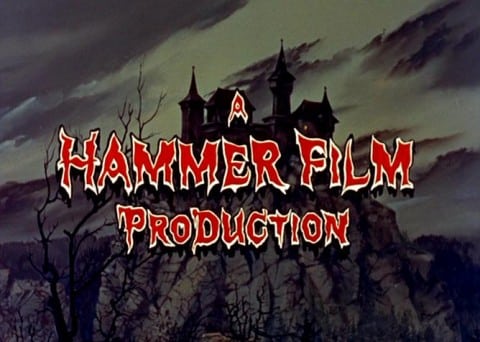
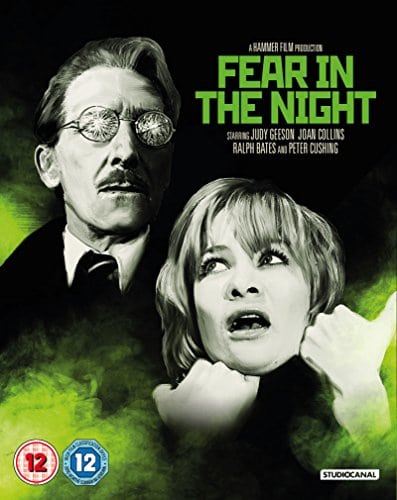
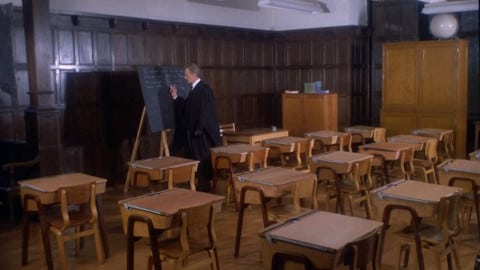


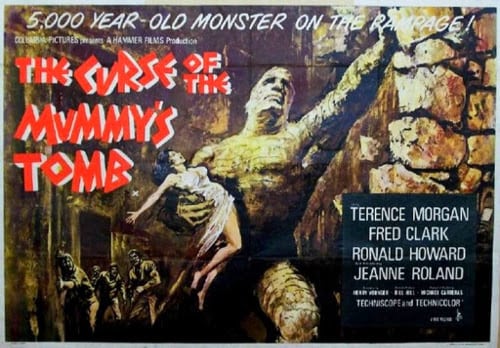

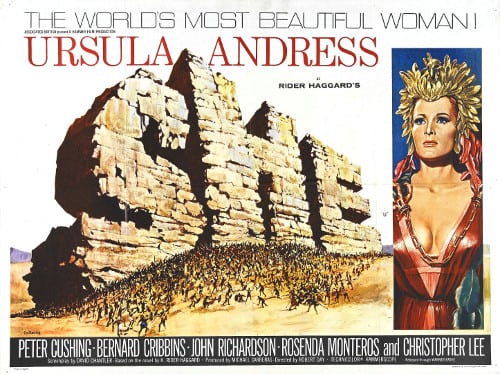
Be the first to comment